Builders Waste Clearance in Mattress Disposal
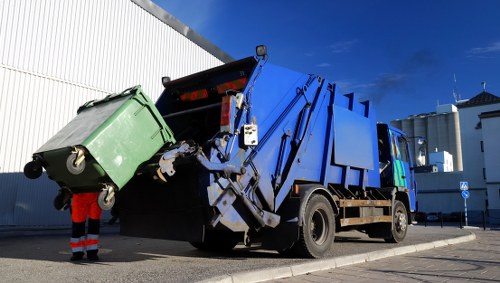
Managing builders waste clearance is a critical aspect of any construction or renovation project. Among the various types of waste generated, mattress disposal often poses unique challenges due to their size, materials, and the need for proper recycling or disposal methods. This article delves into the intricacies of builders waste clearance specifically focusing on mattress disposal, providing valuable insights for contractors, builders, and property owners alike.
Mattresses are substantial items that require careful handling during the clearance process. Improper disposal can lead to environmental hazards, inefficient recycling, and potential legal issues. Therefore, understanding the best practices for mattress disposal is essential for maintaining compliance with local regulations and promoting sustainability in construction projects.
In this comprehensive guide, we will explore the various methods of mattress disposal, the importance of responsible waste management, and the role of professional waste clearance services in facilitating efficient and eco-friendly mattress removal.
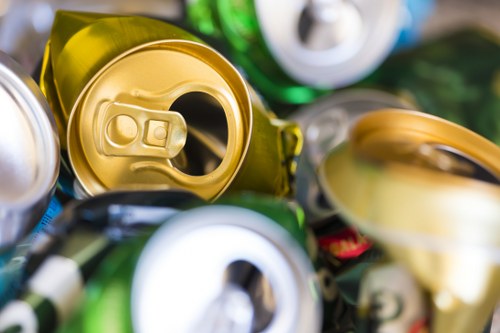
The Importance of Proper Mattress Disposal
Proper mattress disposal is not just a matter of cleanliness; it plays a significant role in environmental conservation and public health. Mattresses are composed of various materials, including metal springs, foam, fabric, and sometimes even hazardous substances like flame retardants. If not disposed of correctly, these materials can contaminate soil and water sources, contributing to pollution and health risks.
Moreover, mattresses take up considerable space in landfills, which are already strained with the increasing volume of waste. By adopting efficient mattress disposal practices, builders can minimize their environmental footprint, promote recycling and reuse of materials, and adhere to waste management regulations.
Additionally, responsible mattress disposal enhances a company's reputation, showcasing its commitment to sustainable practices and fostering trust among clients and stakeholders.
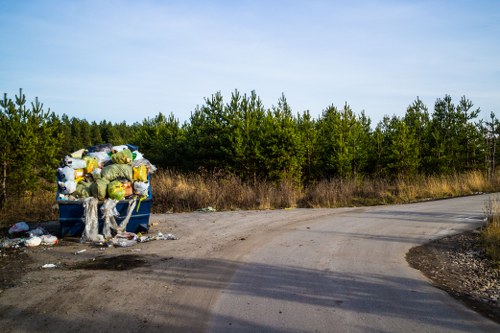
Methods of Mattress Disposal
Recycling
Recycling is one of the most sustainable methods of mattress disposal. This process involves breaking down the mattress into its constituent materials, such as metal, foam, and fabric, which can then be reused in various industries.
- Metal Recovery: The steel springs in mattresses can be recycled and repurposed for manufacturing new products.
- Foam Recycling: Foam components are processed and used in the production of new foam products or as padding in other applications.
- Fabric Reuse: The fabric covering can be recycled into fibers for upholstery or other textile products.
Donation
If the mattress is still in good condition, donation is a viable option. Various charities and non-profit organizations accept used mattresses, which are then distributed to individuals in need or repurposed for community use.
Landfill Disposal
When recycling or donation are not feasible, landfill disposal becomes necessary. However, this method should be the last resort due to its environmental impact. Proper landfill disposal ensures that the mattress is handled in a manner that minimizes soil and water contamination.
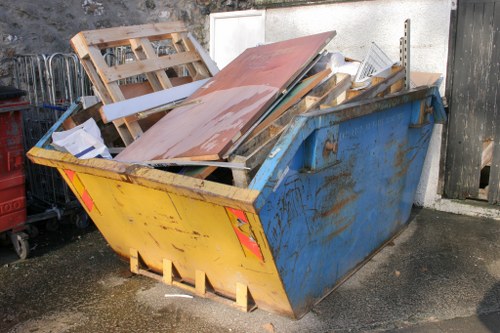
Steps for Effective Mattress Clearance
Assessment
Begin by assessing the quantity and condition of the mattresses to determine the most appropriate disposal method. Consider factors such as the materials used, the size of the mattresses, and any local recycling facilities available.
- Evaluate the materials: Identify the different components of the mattress to facilitate recycling.
- Check local regulations: Ensure compliance with local waste disposal laws and guidelines.
- Determine feasibility: Assess whether recycling, donation, or landfill disposal is the most viable option.
Segregation
Once assessed, segregate the mattress components to streamline the disposal process. Separating materials like metal springs, foam, and fabric can enhance recycling efficiency and reduce overall waste.
Engage Professional Services
Hiring professional waste clearance services ensures that mattresses are disposed of responsibly and in accordance with regulations. These services have the expertise and equipment to handle large volumes of waste safely and efficiently.
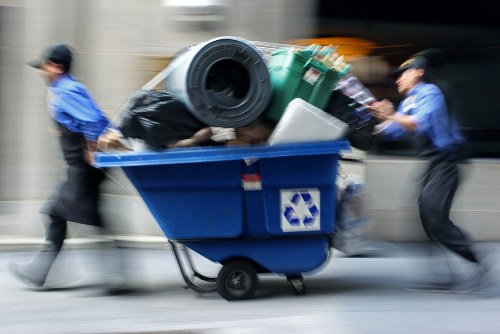
Benefits of Professional Waste Clearance Services
Efficiency
Professional waste clearance services are equipped to handle large quantities of mattresses quickly, saving valuable time and resources for builders and contractors. Their streamlined processes ensure that clearance is completed promptly without disrupting the construction schedule.
- Time-saving: Quickly removes bulky waste, enabling faster project progression.
- Cost-effective: Reduces the need for in-house waste management resources.
- Compliance: Ensures adherence to waste disposal regulations and standards.
Environmental Responsibility
Professional services prioritize eco-friendly disposal methods, such as recycling and proper landfill usage. Their commitment to sustainability helps minimize the environmental impact of construction projects.
Safety
Handling mattresses can pose physical risks, including injuries from heavy lifting and exposure to allergens. Professional clearance teams are trained to manage these risks, ensuring a safe disposal process.

Choosing the Right Waste Clearance Service
Selecting a reputable waste clearance service is crucial for effective mattress disposal. Consider the following factors when making your choice:
- Experience: Opt for companies with a proven track record in builders waste clearance and mattress disposal.
- Licensing and Certification: Ensure the service provider holds the necessary licenses and certifications for waste management.
- Recycling Practices: Choose companies that prioritize recycling and sustainable disposal methods.
- Customer Reviews: Check testimonials and reviews to gauge the service quality and reliability.
- Cost: Compare pricing structures to find a service that offers value without compromising on quality.
Questions to Ask Potential Providers
- What waste disposal methods do you employ for mattresses?
- Are you licensed to handle and dispose of builders waste?
- Do you offer recycling services for mattress materials?
- What is your pricing structure for large-scale waste clearance?
- Can you provide references or case studies of previous projects?

Regulatory Compliance in Mattress Disposal
Adhering to local and national regulations is paramount in builders waste clearance. Non-compliance can result in hefty fines, legal issues, and damage to a company's reputation.
Understand Local Regulations
Different regions have varying rules regarding waste disposal. It's essential to familiarize yourself with these regulations to ensure that mattress disposal practices meet legal requirements.
- Licensing: Some areas require specific licenses for waste disposal services.
- Landfill Restrictions: Certain materials may be restricted from landfill disposal.
- Recycling Mandates: Some jurisdictions mandate recycling of specific waste types, including mattresses.
Documentation and Reporting
Maintaining accurate records of waste disposal is crucial for compliance. This includes tracking the quantity of waste, disposal methods, and the facilities where waste is processed.
Environmental Impact Assessments
Conducting environmental impact assessments can help identify the potential effects of waste disposal practices and implement measures to mitigate negative impacts.

Sustainable Practices in Mattress Disposal
Embracing sustainable practices in mattress disposal not only benefits the environment but also enhances a company's sustainability credentials.
Material Recovery
Recovering materials from mattresses, such as metals and foams, reduces the need for virgin resources and supports the circular economy.
- Metal Springs: Recycled into new products like automotive parts.
- Foam: Repurposed for insulation or padding materials.
- Fabric: Used in manufacturing upholstery or textile products.
Energy Recovery
In cases where recycling is not feasible, energy recovery through processes like incineration can convert waste into usable energy, reducing reliance on fossil fuels.
Innovative Disposal Technologies
Advancements in disposal technologies, such as automated shredding and separation systems, enhance the efficiency and effectiveness of mattress recycling.

Cost Implications of Mattress Disposal
Effective mattress disposal can have significant cost implications for builders and contractors. Understanding these costs helps in budgeting and resource allocation.
Direct Costs
Direct costs include fees charged by waste clearance services, transportation expenses, and any costs associated with recycling or landfill disposal.
- Service Fees: Vary based on the volume of waste and the disposal method chosen.
- Transportation: Costs depend on the distance to disposal or recycling facilities.
- Recycling Fees: Some materials may incur additional costs for processing.
Indirect Costs
Indirect costs involve potential fines for non-compliance, environmental remediation expenses, and the impact on project timelines.
Cost-Saving Strategies
Implementing cost-saving strategies, such as bulk waste clearance contracts and prioritizing recycling, can help mitigate expenses associated with mattress disposal.

Case Studies: Successful Mattress Disposal
Project A: Sustainable Renovation
In a large-scale renovation project, a builder partnered with a professional waste clearance service to manage mattress disposal. By opting for recycling and material recovery, the project minimized its environmental impact and reduced landfill waste by 60%.
Project B: Commercial Construction
A commercial construction site generated numerous old mattresses. Utilizing an experienced clearance service ensured that the mattresses were either donated or recycled, adhering to local regulations and enhancing the company's sustainability profile.
Project C: Residential Development
A residential development project implemented a comprehensive waste management plan, including mattress disposal. By segregating waste and collaborating with eco-friendly disposal services, the project achieved efficient clearance and cost savings.

Future Trends in Mattress Disposal
The landscape of mattress disposal is evolving with advancements in technology and growing environmental awareness.
- Advanced Recycling Technologies: Innovations in recycling processes are making it easier to break down and reuse mattress materials.
- Increased Regulation: Governments are tightening regulations to ensure responsible waste management practices.
- Circular Economy Integration: Emphasizing the reuse and recycling of materials to create a more sustainable economy.
- Smart Waste Management Systems: Utilizing data and automation to optimize waste clearance operations.
Impact of Technology
Technological advancements are streamlining the mattress disposal process, making it more efficient and environmentally friendly. Automated systems for sorting and processing materials are reducing labor costs and increasing recycling rates.
Growing Environmental Awareness
With increasing awareness of environmental issues, there is a greater push for sustainable waste disposal practices. Builders are more inclined to adopt eco-friendly methods to meet both regulatory requirements and client expectations.

Implementing Best Practices
To ensure effective mattress disposal, builders should implement best practices that align with sustainability and regulatory compliance.
Develop a Waste Management Plan
A comprehensive waste management plan outlines the procedures for waste segregation, disposal methods, and compliance checks, ensuring organized and efficient mattress disposal.
- Set Clear Objectives: Define the goals for waste reduction and disposal methods.
- Assign Responsibilities: Designate team members to oversee waste management tasks.
- Monitor and Review: Regularly assess the effectiveness of waste disposal practices and make necessary adjustments.
Training and Education
Providing training for staff on proper waste handling and disposal techniques ensures that everyone involved understands their roles and responsibilities, promoting a smooth clearance process.
Collaboration with Experts
Partnering with waste management experts can provide valuable insights and access to resources that enhance the efficiency and sustainability of mattress disposal practices.

Environmental Benefits of Proper Mattress Disposal
Responsible mattress disposal offers numerous environmental benefits, contributing to broader sustainability goals.
- Resource Conservation: Recycling mattress materials reduces the demand for virgin resources, conserving natural habitats.
- Energy Savings: Recycling processes often require less energy compared to producing new materials from scratch.
- Pollution Reduction: Proper disposal minimizes the release of harmful substances into the environment.
- Landfill Space Preservation: Efficient waste clearance frees up landfill space for other essential wastes, extending their operational lifespan.
Carbon Footprint Reduction
Recycling and energy recovery from mattresses can significantly lower the carbon footprint associated with waste disposal, contributing to climate change mitigation efforts.
Supporting the Circular Economy
By reusing and recycling materials, mattress disposal supports the principles of the circular economy, promoting sustainable production and consumption patterns.

Challenges in Mattress Disposal
Despite the advantages, mattress disposal presents several challenges that need to be addressed to ensure effective waste management.
Size and Bulkiness
Mattresses are large and bulky, making transportation and handling more difficult. This can increase the logistical complexity and cost of disposal.
- Transportation Costs: Larger items require more space, leading to higher transportation expenses.
- Handling Requirements: Specialized equipment may be necessary to move and process bulky mattresses.
Material Separation
Separating different materials within a mattress is labor-intensive and requires specialized processes. Without effective separation, the potential for recycling is diminished.
Regulatory Compliance
Keeping up with evolving waste management regulations can be challenging, especially for businesses operating in multiple regions with differing laws.

Solutions to Mattress Disposal Challenges
Addressing the challenges associated with mattress disposal involves adopting strategic solutions that enhance efficiency and sustainability.
Modular Disposal Systems
Implementing modular disposal systems that facilitate easy dismantling of mattresses can simplify the separation of materials, enhancing recycling efforts.
- Automated Shredding: Utilizing automated shredding machines to break down mattresses into manageable components.
- Efficient Sorting: Advanced sorting technologies to accurately separate different materials.
Collaborative Partnerships
Partnering with recycling facilities and waste management experts can provide access to resources and expertise needed to overcome disposal challenges.
Regulatory Adherence Programs
Establishing programs to stay updated with regulatory changes ensures ongoing compliance and minimizes the risk of legal issues.

Conclusion
Builders waste clearance in mattress disposal is a multifaceted process that demands careful planning, adherence to regulations, and a commitment to sustainability. By understanding the importance of proper disposal methods, leveraging professional services, and implementing best practices, builders can effectively manage mattress waste, minimize environmental impact, and maintain compliance with waste management laws.
Embracing eco-friendly disposal methods not only benefits the environment but also enhances a company's reputation and promotes a circular economy. As the construction industry continues to evolve, prioritizing responsible waste management will be paramount in achieving sustainable development goals and fostering a healthier planet.
Contact us today to learn more about our professional builders waste clearance services and ensure your mattress disposal is handled efficiently and responsibly.
Frequently Asked Questions
- Your Guide to Mattress Disposal Services in Forest Gate
- Effective Mattress Disposal Solutions in Camden
- Effective Mattress Disposal Solutions in Rainham
- Your Guide to Mattress Disposal in St Johns Wood
- Complete Mattress Disposal Solutions in Lamorbey
- Your Guide to Responsible Mattress Disposal in Gunnersbury
- Your Ultimate Guide to Mattress Disposal in Old Oak Common
- Eco-Friendly Mattress Removal Services in Chase Cross
- Comprehensive Mattress Disposal Solutions in Waddon
- Responsible Mattress Disposal Solutions in Kew
- Effective Mattress Disposal Solutions in Hounslow
- Your Guide to Responsible Mattress Disposal in Harlesden
- Effective Mattress Disposal Solutions in Harmondsworth
- Effective Mattress Disposal Solutions in Richmond upon Thames
- Effective Mattress Disposal Solutions in Sydenham Hill
- Your Guide to Responsible Mattress Removal in Hampton Wick
- Effective Ways to Dispose of Your Mattress in Cheam